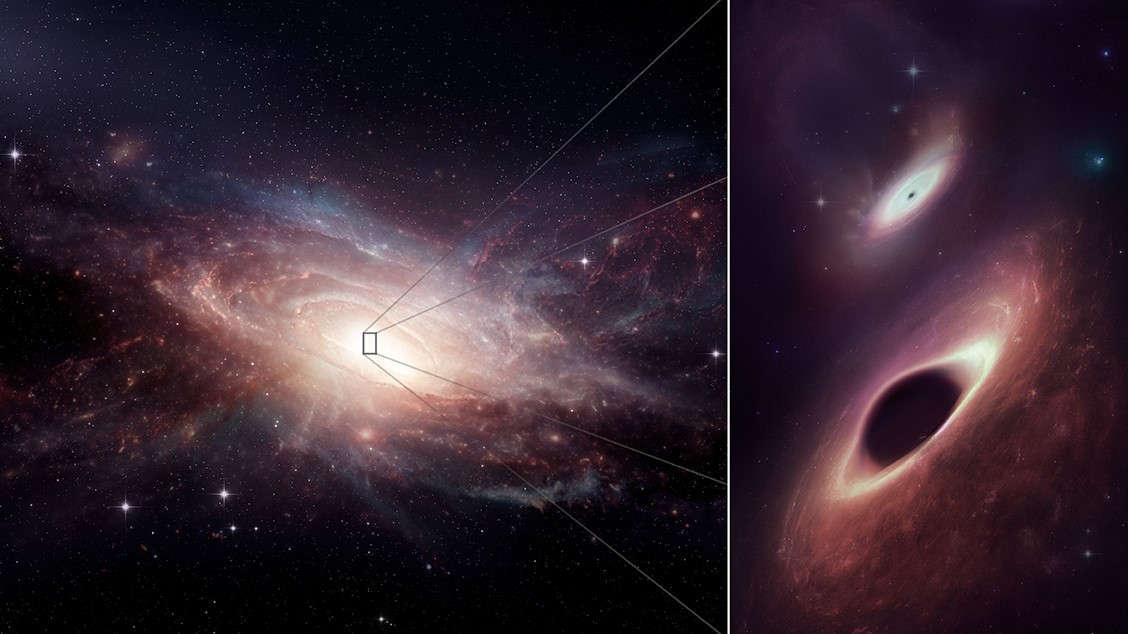6.08.2024

This artist’s conception shows a late-stage galaxy merger and its two newly-discovered central black holes. The binary black holes are the closest together ever observed in multiple wavelengths. Credit: ALMA (ESO/NAOJ/NRAO); M. Weiss, NRAO/AUI/NSF.
A quantum state in a lab has produced something which is mathematically indistinguishable from a phenomenon only ever witnessed when black holes collide: gravitational waves.
Gravitational waves were predicted by Einstein in 1916 as the “ripples” of space-time caused by massive cosmic events such as black hole collisions. It was not until 2015 before gravitational waves were first observed.
Scientists in Japan have proposed a new method for simulating gravitational waves in labs, detailed in a new paper published in Physical Review B.
Gravitational waves can contain important information about the universe.
“The problem is that they are very, very hard to observe,” says senior author Professor Nic Shannon, head of the unit at the Okinawa Institute for Science and Technology (OIST) which carried out the research.
Massive instruments like the US Laser Interferometer Gravitational-Wave Observatory (LIGO) have been built to detect the sub-atom-sized changes in lengths to spot gravitational waves. But even these kinds of detectors can only detect gravitational waves caused by the most violent events in the universe like black hole mergers.
Another way of understanding the universe by exploring gravitational waves would be to study phenomena on Earth which mimic these cosmic ripples.
The team found such a phenomenon based on another of Einstein’s contributions to physics.
Einstein predicted that a certain type of subatomic particle called bosons could exist in a state called a Bose-Einstein condensate in which a group of particles act in unison.
They focused on a specific type of Bose-Einstein condensate called spin nematics.
“Nematic phases are all around us,” says Shannon. “In the Liquid Crystal Displays (LCDs) of our smartphones, tablets and televisions.”
Quantum particles in a spin-nematic state carry energy through waves.
“We realised that the properties of the waves in the spin-nematic state are mathematically identical to those of gravitational waves,” says Shannon.
“This result is important because it makes it possible to simulate and study gravitational waves in a much simpler experimental setting and use the results to help us to understand real gravitational waves,” says co-author Professor Han Yan from the University of Tokyo.
“I’ve always been fascinated by the fact that we can describe what seem to be different phenomena by very similar underlying mathematical structures, and for me this is the most beautiful part of physics,” says lead author Dr Leilee Chojnacki from OIST.
Quelle: COSMOS
